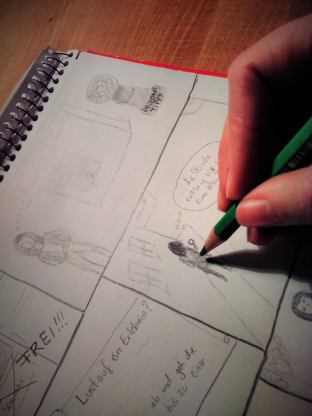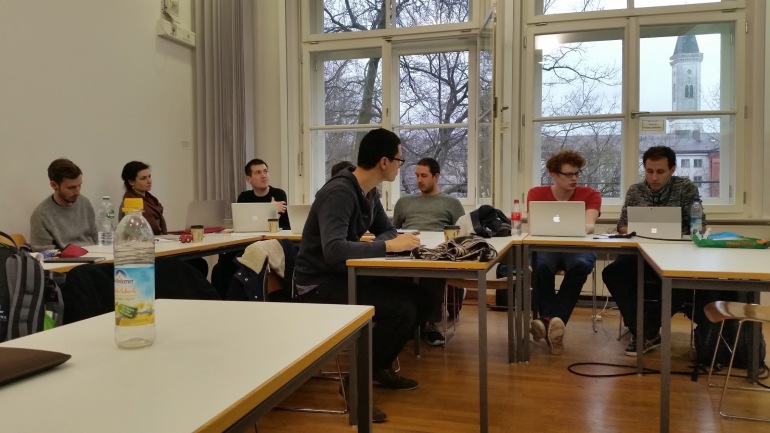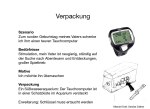On Thursday we all met in the morning for a short status report and then talked about all the to-dos before the final presentation. It’s the last day before the final presentation, so our task for today was to finish our video prototypes and then go out to the streets and ask random people how they liked our product ideas. The goal was to get first user feedback and also let them fill out the interaction design vocabulary to compare that with the one each group defined for their product at the beginning of the ideation phase. Finally this would be the indicator of how the experience perceived by the prototype matches with the experience we wanted to conduct. After Daniel explained all the deliverables, the structure for the final presentation and requirements for the upcoming evaluation, the groups worked independently for the rest of the day on the remaining tasks for their product.

Team Sparpflanze had already done the prototype and the video the evening before so they went straight onto the evaluation phase and preparation for the final presentation.
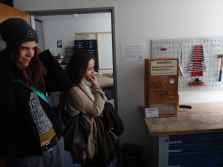
Team Erlebnis Generator was a bit in delay with building the prototype because they couldn’t find the right material at the beginning of the week and in addition they had to wait for the laser cut introduction until Wednesday, before they could start working on their „machine“.
But they managed to finish their prototype on Wednesday and this morning they focused on shooting their concept video so that they can use it for the interviews in the afternoon.
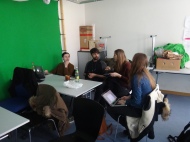
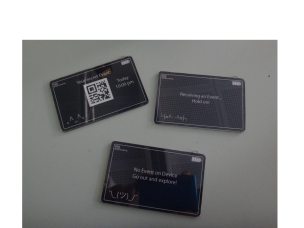
Team InstaDrop was also well in time and had already prepared their (video) prototype. Today they focused on getting user interviews and preparing the slides for the final presentation.
Team CubeX finished their redesigned cubes and were also done cutting the video scenes on Wednesday. Today the team split up so that a few could 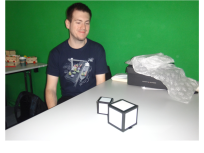 finish editing the video and adding some special effects while the rest went out to collect user feedback.
finish editing the video and adding some special effects while the rest went out to collect user feedback.
Altogether every group managed to stay in time and was able to finish all the required deliverables by the end of the day.
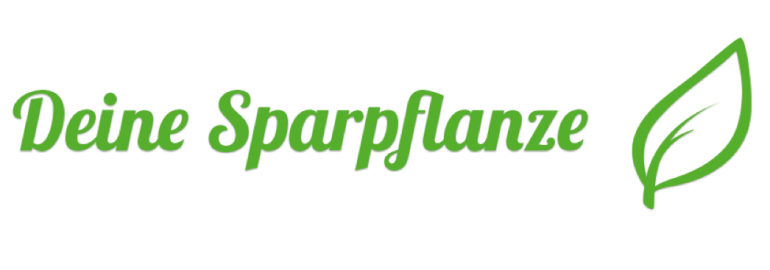
 The Saving Plant can be described as a living savings box. When the plant is bought, it gets preconfigured. For that, you determine a savings target and a space of time. To reach this target you have to drop a specific sum of euros into the plant every day, which guarantees the plant’s water supply. In our example the necessary sum is 2 Euros, depending on the preconfigured values. If no money is dropped in for 4 days, the plant will die. The top of the plant is covered to avoid watering in the normal way (without dropping in money). It also contains a hole to fill up the water tank and a display which shows the progress.
The Saving Plant can be described as a living savings box. When the plant is bought, it gets preconfigured. For that, you determine a savings target and a space of time. To reach this target you have to drop a specific sum of euros into the plant every day, which guarantees the plant’s water supply. In our example the necessary sum is 2 Euros, depending on the preconfigured values. If no money is dropped in for 4 days, the plant will die. The top of the plant is covered to avoid watering in the normal way (without dropping in money). It also contains a hole to fill up the water tank and a display which shows the progress. 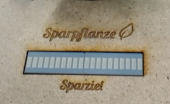 When the savings target is reached, the plant pot gets unlocked and it is possible to extract the money and the plant.
When the savings target is reached, the plant pot gets unlocked and it is possible to extract the money and the plant.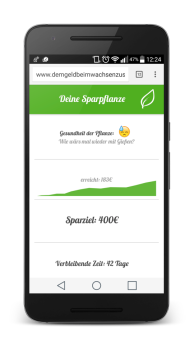
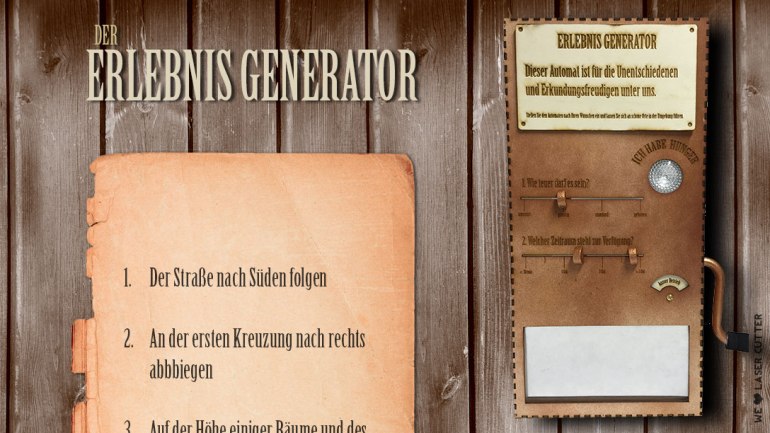
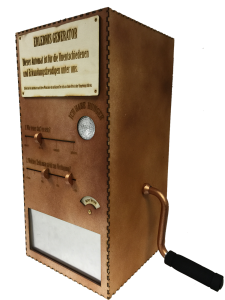
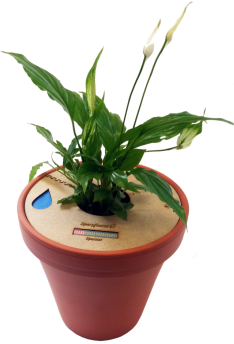
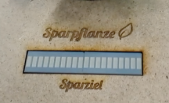 Ist das Sparziel erreicht öffnet sich die Verriegelung und man kann Pflanze und Münzspeicher entnehmen.
Ist das Sparziel erreicht öffnet sich die Verriegelung und man kann Pflanze und Münzspeicher entnehmen. informieren zu können bekommt jeder Sparpflanzen-Besitzer eine URL mit Parameter. Damit kommt er auf seine persönliche Seite auf der man die Gesundheit der Pflanze, das festgelegte Sparziel, den Fortschritt des Sparziels und die voraussichtlich verbleibende Zeit bis zum erreichen des Sparziels einsehen kann. Zusätzlich kann man zur Wiederverwendung der Sparpflanze nach Erreichen des Sparziels die Werte via einem Button auf dieser Seite zurücksetzen und neu festlegen. Auch die Pflanze kann er Besitzer dann durch eine neue ersetzen.
informieren zu können bekommt jeder Sparpflanzen-Besitzer eine URL mit Parameter. Damit kommt er auf seine persönliche Seite auf der man die Gesundheit der Pflanze, das festgelegte Sparziel, den Fortschritt des Sparziels und die voraussichtlich verbleibende Zeit bis zum erreichen des Sparziels einsehen kann. Zusätzlich kann man zur Wiederverwendung der Sparpflanze nach Erreichen des Sparziels die Werte via einem Button auf dieser Seite zurücksetzen und neu festlegen. Auch die Pflanze kann er Besitzer dann durch eine neue ersetzen.
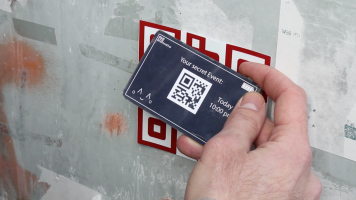
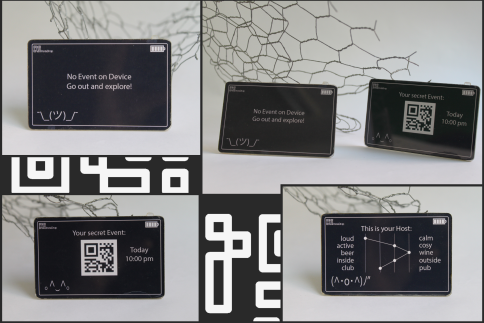

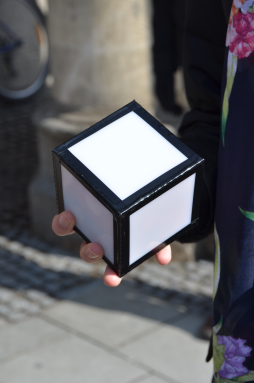

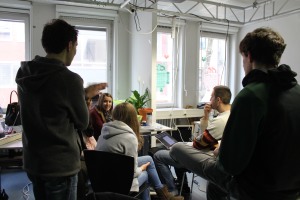
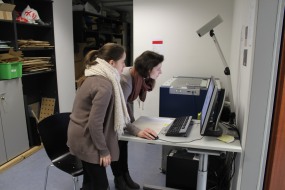
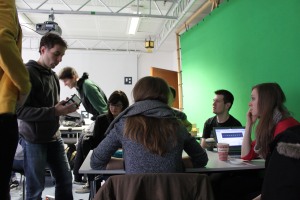
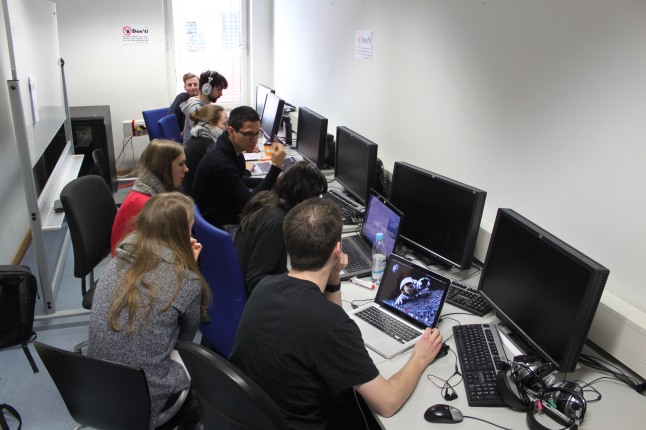

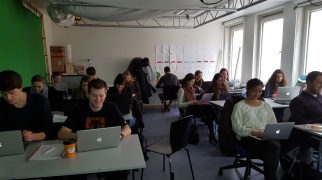 After the recap round, we reviewed our idea again to see if we could improve it. The next step was incorporating our ideas into a story. We took a look at an exemplatory story in order to see how an Experience Story should look like and Daniel explained the different parts of the story: Explanation of the Baseline – Experience Baseline – Framework for the Experience – Concrete Interaction – Situation after the interaction Simon added a more vivid viewpoint with his image of a story mouse. Finally, we got the task to write our own story based on our idea, while always keeping the important w-questions and the emotions of the protagonist in mind.
After the recap round, we reviewed our idea again to see if we could improve it. The next step was incorporating our ideas into a story. We took a look at an exemplatory story in order to see how an Experience Story should look like and Daniel explained the different parts of the story: Explanation of the Baseline – Experience Baseline – Framework for the Experience – Concrete Interaction – Situation after the interaction Simon added a more vivid viewpoint with his image of a story mouse. Finally, we got the task to write our own story based on our idea, while always keeping the important w-questions and the emotions of the protagonist in mind.